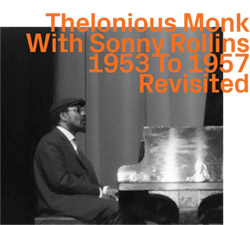
Restoring and remastering three key sessions documenting the evolving creative relationship between Thelonious Monk and Sonny Rollins, alongside artists including Julius Watkins, Ernie Henry, Oscar Pettiford, and Max Roach, in a vital revisitation of formative collaborations that highlight Monk's unique brilliance and Rollins' early improvisational voice within shifting post-bop ensembles.
In Stock
Quantity in Basket: None
Log In to use our Wish List
Shipping Weight: 3.00 units
EU & UK Customers:
Discogs.com can handle your VAT payments
So please order through Discogs
Sample The Album:
Thelonious Monk-piano, celeste
Horace Silver-piano
Sonny Rollins-tenor saxophone
Clark Terry-trumpet
Ernie Henry-alto saxophone
Julius Watkins-french horn
J.J. Johnson-trombone
Percy Heath-double bass
Oscar Pettiford-double bass
Paul Chambers-double bass
Willie Jones-drums
Max Roach-drums, timpani
Art Blakey-drums
Click an artist name above to see in-stock items for that artist.
UPC: 752156118022
Label: ezz-thetics by Hat Hut Records Ltd
Catalog ID: ezz-thetics 1180
Squidco Product Code: 36129
Format: CD
Condition: New
Released: 2025
Country: Switzerland
Packaging: Cardboard Gatefold
Tracks 1-3 recorded in New York City, on November 13th, 1953.
Tracks 4-7 recorded in New York City, on October 9th, October 15th and December 7th, 1956.
Tracks 8 and 9 recorded in New York City, on April 14th, 1957.
"For better or worse, our understanding of the events and particulars throughout the history of jazz is largely dependent upon the 100-plus years of documentation on recordings, which is a revealing and yet concealing, compelling and frustrating, fortuitous and often arbitrary, but most significantly, incomplete set of circumstances. And the factual information available to us through discographies - if used as historical narrative - can be as sketchy and misleading as Donald Trump's tax forms.
For example, let us consider this collection of the three separate recording ventures which feature Sonny Rollins performing the compositions of, in the company of, Thelonious Monk - rather surprisingly, if the discographies are to be believed, with the exceptions of two stabs each at "52nd Street Theme" and "'Round Midnight" (lastly in 1964), the only times in his long career he confronted Monk tunes in the studio, and which, on the surface, gives us only a partial impression of their musical relationship and the depth of Rollins' debt to Monk.
Fortunately recent jazz scholarship, such as Robin D. G. Kelley's Thelonious Monk: The Life and Times of an American Original and Aidan Levy's Saxophone Colossus: The Life and Music of Sonny Rollins among others, has given us a broader picture of the formal and informal interactions between jazz musicians in the mid-20th century - detailing the reasons why "working groups" were unable to retain a consistent personnel, how frequently unplanned and sometimes spontaneous group changes accompanied live performances, and the casual exchange of ideas in ad hoc get-togethers and jam sessions, emphasizing the long-term effect of these valuable but primarily undocumented experiences.
Thus we learn that though they may not have recorded together until 1953, when Rollins was 23 years old, Sonny was introduced to Monk while a senior in high school, already part of a cadre of young neighborhood jazz neophytes including pianists Walter Bishop Jr. and Kenny Drew, drummers Art Taylor and Roy Haynes, saxophonists Jackie McLean and Ernie Henry. Monk became a mentor to them, offering home-based instruction on the new possibilities restructuring bop harmonies and rhythms, or as Rollins later put it, "the geometry of musical time and space."
This unofficial apprenticeship was the first of several stages that influenced and redirected Rollins over the course of a seven-decade career. Initially attracted to the romantically volatile style originated by Coleman Hawkins and updated by Don Byas, Rollins quickly transferred allegiance to Charlie Parker after hearing "Koko" in 1946. Rehearsing with Monk while still a teenager provided him not only with special insight on the Parker idiom, but alternatives to harmony and form that required individual solutions, just as Monk would later stimulate the experimental curiosities of John Coltrane and Steve Lacy.
A precocious talent fluent in bop orthodoxy, Rollins first recorded with Babs Gonzales, J. J. Johnson, and Bud Powell, but it was a youthful friendship - based upon shared musical interests and drug dependency - with Miles Davis that pushed Rollins into the limelight via recordings, including his own inaugural session as a leader in 1951. Though not a permanent member of either band, he alternated between Miles and Monk on gigs, while beginning to formulate his own conceptual perspective. Working regularly with Monk from late 1953 to May '54 meant an intimate familiarity with his repertoire, resulting in the November '53 session for Prestige. (The last-minute unavailability of trumpeter Ray Copeland led to an unusual replacement, french hornist Julius Watkins, another of Monk's youthful home workshop crew.) Rollins was now Monk's first-call saxist, but when Monk returned to the studio six months later, Rollins was incarcerated on drug-related charges, and Frank Foster took his place.
By 1956 Rollins had found a "permanent" albeit ill-fated home in the Clifford Brown-Max Roach quintet, recorded with John Coltrane the prophetic track "Tenor Madness" and his own breakthrough album Saxophone Colossus. But on June 26 Clifford Brown and pianist Richie Powell died in a car crash, so in October when Monk called him for the first of the three dates required to finalize the troubled but brilliant Brilliant Corrners album, alongside another youthful cohort, altoist Ernie Henry, Rollins accepted. But his future was headed in another direction.
The extent of Monk's respect for Rollins' development is shown by his two rare appearances as sideman on Rollins sessions: October '54 for Prestige, where no Monk tunes had been prepared, and Sonny's Blue Note date of April 1957, as Rollins was strategizing his own future as a leader, being less dependent on sideman jobs. As a result, Monk looked elsewhere, and soon adopted John Coltrane (note: Thelonious Monk with John Coltrane 1957 Revisited, ezz-thetics 1166). Coincidently, Coltrane's first recording with Monk was nine days before Monk and Rollins' final recording together - circumstances which led to the irony of Monk having Coltrane, and not Rollins, record with Coleman Hawkins on the June '57 Monk's Music. It would be six years later that Rollins finally recorded with Hawkins, his early idol. By that point, there was no looking back."-Art Lange, Chicago, May 2024
Artist Biographies
• Show Bio for Thelonious Monk "Thelonious Sphere Monk. October 10, 1917-February 17, 1982. With the arrival Thelonious Sphere Monk, modern music-let alone modern culture--simply hasn't been the same. Recognized as one of the most inventive pianists of any musical genre, Monk achieved a startlingly original sound that even his most devoted followers have been unable to successfully imitate. His musical vision was both ahead of its time and deeply rooted in tradition, spanning the entire history of the music from the "stride" masters of James P. Johnson and Willie "the Lion" Smith to the tonal freedom and kinetics of the "avant garde." And he shares with Edward "Duke" Ellington the distinction of being one of the century's greatest American composers. At the same time, his commitment to originality in all aspects of life-in fashion, in his creative use of language and economy of words, in his biting humor, even in the way he danced away from the piano-has led fans and detractors alike to call him "eccentric," "mad" or even "taciturn." Consequently, Monk has become perhaps the most talked about and least understood artist in the history of jazz. Born on October 10, 1917, in Rocky Mount, North Carolina, Thelonious was only four when his mother and his two siblings, Marion and Thomas, moved to New York City. Unlike other Southern migrants who headed straight to Harlem, the Monks settled on West 63rd Street in the "San Juan Hill" neighborhood of Manhattan, near the Hudson River. His father, Thelonious, Sr., joined the family three years later, but health considerations forced him to return to North Carolina. During his stay, however, he often played the harmonica, 'Jew's harp," and piano-all of which probably influenced his son's unyielding musical interests. Young Monk turned out to be a musical prodigy in addition to a good student and a fine athlete. He studied the trumpet briefly but began exploring the piano at age nine. He was about nine when Marion's piano teacher took Thelonious on as a student. By his early teens, he was playing rent parties, sitting in on organ and piano at a local Baptist church, and was reputed to have won several "amateur hour" competitions at the Apollo Theater. ,Admitted to Peter Stuyvesant, one of the city's best high schools, Monk dropped out at the end of his sophomore year to pursue music and around 1935 took a job as a pianist for a traveling evangelist and faith healer. Returning after two years, he formed his own quartet and played local bars and small clubs until the spring of 1941, when drummer Kenny Clarke hired him as the house pianist at Minton's Playhouse in Harlem. Minton's, legend has it, was where the "bebop revolution" began. The after-hours jam sessions at Minton's, along with similar musical gatherings at Monroe's Uptown House, Dan Wall's Chili Shack, among others, attracted a new generation of musicians brimming with fresh ideas about harmony and rhythm-notably Charlie Parker, Dizzy Gillespie, Mary Lou Williams, Kenny Clarke, Oscar Pettiford, Max Roach, Tadd Dameron, and Monk's close friend and fellow pianist, Bud Powell. Monk's harmonic innovations proved fundamental to the development of modern jazz in this period. Anointed by some critics as the "High Priest of Bebop," several of his compositions ("52nd Street Theme," "Round Midnight," "Epistrophy" [co-written with Kenny Clarke and originally titled "Fly Right" and then "Iambic Pentameter"], "I Mean You") were favorites among his contemporaries. Thelonious Monk StyleYet, as much as Monk helped usher in the bebop revolution, he also charted a new course for modern music few were willing to follow. Whereas most pianists of the bebop era played sparse chords in the left hand and emphasized fast, even eighth and sixteenth notes in the right hand, Monk combined an active right hand with an equally active left hand, fusing stride and angular rhythms that utilized the entire keyboard. And in an era when fast, dense, virtuosic solos were the order of the day, Monk was famous for his use of space and silence. In addition to his unique phrasing and economy of notes, Monk would "lay out" pretty regularly, enabling his sidemen to experiment free of the piano's fixed pitches. As a composer, Monk was less interested in writing new melodic lines over popular chord progressions than in creating a whole new architecture for his music, one in which harmony and rhythm melded seamlessly with the melody. "Everything I play is different," Monk once explained, "different melody, different harmony, different structure. Each piece is different from the other. . . . [W]hen the song tells a story, when it gets a certain sound, then it's through . . . completed." ,Despite his contribution to the early development of modern jazz, Monk remained fairly marginal during the 1940s and early 1950s. Besides occasional gigs with bands led by Kenny Clarke, Lucky Millinder, Kermit Scott, and Skippy Williams, in 1944 tenor saxophonist Coleman Hawkins was the first to hire Monk for a lengthy engagement and the first to record with him. Most critics and many musicians were initially hostile to Monk's sound. Blue Note, then a small record label, was the first to sign him to a contract. Thus, by the time he went into the studio to lead his first recording session in 1947, he was already thirty years old and a veteran of the jazz scene for nearly half of his life. But he knew the scene and during the initial two years with Blue Note had hired musicians whom he believed could deliver. Most were not big names at the time but they proved to be outstanding musicians, including trumpeters Idrees Sulieman and George Taitt; twenty-two year-old Sahib Shihab and seventeen-year-old Danny Quebec West on alto saxophones; Billy Smith on tenor; and bassists Gene Ramey and John Simmons. On some recordings Monk employed veteran Count Basie drummer Rossiere "Shadow" Wilson; on others, the drum seat was held by well-known bopper Art Blakey. His last Blue Note session as a leader in 1952 finds Monk surrounded by an all-star band, including Kenny Dorham (trumpet), Lou Donaldson (alto), "Lucky" Thompson (tenor), Nelson Boyd (bass), and Max Roach (drums). In the end, although all of Monk's Blue Note sides are hailed today as some of his greatest recordings, at the time of their release in the late 1940s and early 1950s, they proved to be a commercial failure. Harsh, ill-informed criticism limited Monk's opportunities to work-opportunities he desperately needed especially after his marriage to Nellie Smith in 1947, and the birth of his son, Thelonious, Jr., in 1949. Monk found work where he could, but he never compromised his musical vision. His already precarious financial situation took a turn for the worse in August of 1951, when he was falsely arrested for narcotics possession, essentially taking the rap for his friend Bud Powell. Deprived of his cabaret card-a police-issued "license" without which jazz musicians could not perform in New York clubs-Monk was denied gigs in his home town for the next six years. Nevertheless, he played neighborhood clubs in Brooklyn-most notably, Tony's Club Grandean, sporadic concerts, took out-of-town gigs, composed new music, and made several trio and ensemble records under the Prestige Label (1952-1954), which included memorable performances with Sonny Rollins, Miles Davis, and Milt Jackson. In the fall of1953, he celebrated the birth of his daughter Barbara, and the following summer he crossed the Atlantic for the first time to play the Paris Jazz Festival. During his stay, he recorded his first solo album for Vogue. These recordings would begin to establish Monk as one of the century's most imaginative solo pianists. In 1955, Monk signed with a new label, Riverside, and recorded several outstanding LP's which garnered critical attention, notably Thelonious Monk Plays Duke Ellington, The Unique Thelonious Monk, Brilliant Corners, Monk's Music and his second solo album, Thelonious Monk Alone. In 1957, with the help of his friend and sometime patron, the Baroness Pannonica de Koenigswarter, he had finally gotten his cabaret card restored and enjoyed a very long and successful engagement at the Five Spot Café with John Coltrane on tenor saxophone, Wilbur Ware and then Ahmed Abdul-Malik on bass, and Shadow Wilson on drums. From that point on, his career began to soar; his collaborations with Johnny Griffin, Sonny Rollins, Art Blakey, Clark Terry, Gerry Mulligan, and arranger Hall Overton, among others, were lauded by critics and studied by conservatory students. Monk even led a successful big band at Town Hall in 1959. It was as if jazz audiences had finally caught up to Monk's music. By 1961, Monk had established a more or less permanent quartet consisting of Charlie Rouse on tenor saxophone, John Ore (later Butch Warren and then Larry Gales) on bass, and Frankie Dunlop (later Ben Riley) on drums. He performed with his own big band at Lincoln Center (1963), and at the Monterey Jazz Festival, and the quartet toured Europe in 1961 and Japan in 1963. In 1962, Monk had also signed with Columbia records, one of the biggest labels in the world, and in February of 1964 he became the third jazz musician in history to grace the cover of Time Magazine. However, with fame came the media's growing fascination with Monk's alleged eccentricities. Stories of his behavior on and off the bandstand often overshadowed serious commentary about his music. The media helped invent the mythical Monk-the reclusive, naïve, idiot savant whose musical ideas were supposed to be entirely intuitive rather than the product of intensive study, knowledge and practice. Indeed, his reputation as a recluse (Time called him the "loneliest Monk") reveals just how much Monk had been misunderstood. As his former sideman, tenor saxophonist Johnny Griffin, explained, Monk was somewhat of a homebody: "If Monk isn't working he isn't on the scene. Monk stays home. He goes away and rests." Unlike the popular stereotypes of the jazz musician, Monk was devoted to his family. He appeared at family events, played birthday parties, and wrote playfully complex songs for his children: "Little Rootie Tootie" for his son, "Boo Boo's Birthday" and "Green Chimneys" for his daughter, and a Christmas song titled "A Merrier Christmas." The fact is, the Monk family held together despite long stretches without work, severe money shortages, sustained attacks by critics, grueling road trips, bouts with illness, and the loss of close friends. During the 1960s, Monk scored notable successes with albums such as Criss Cross, Monk's Dream, It's Monk Time, Straight No Chaser, and Underground. But as Columbia/CBS records pursued a younger, rock-oriented audience, Monk and other jazz musicians ceased to be a priority for the label. Monk's final recording with Columbia was a big band session with Oliver Nelson's Orchestra in November of 1968, which turned out to be both an artistic and commercial failure. Columbia's disinterest and Monk's deteriorating health kept the pianist out of the studio. In January of 1970, Charlie Rouse left the band, and two years later Columbia quietly dropped Monk from its roster. For the next few years, Monk accepted fewer engagements and recorded even less. His quartet featured saxophonists Pat Patrick and Paul Jeffrey, and his son Thelonious, Jr., took over on drums in 1971. That same year through 1972, Monk toured widely with the "Giants of Jazz," a kind of bop revival group consisting of Dizzy Gillespie, Kai Winding, Sonny Stitt, Al McKibbon and Art Blakey, and made his final public appearance in July of 1976. Physical illness, fatigue, and perhaps sheer creative exhaustion convinced Monk to give up playing altogether. On February 5, 1982, he suffered a stroke and never regained consciousness; twelve days later, on February 17th, he died. Today Thelonious Monk is widely accepted as a genuine master of American music. His compositions constitute the core of jazz repertory and are performed by artists from many different genres. He is the subject of award winning documentaries, biographies and scholarly studies, prime time television tributes, and he even has an Institute created in his name. The Thelonious Monk Institute of Jazz was created to promote jazz education and to train and encourage new generations of musicians. It is a fitting tribute to an artist who was always willing to share his musical knowledge with others but expected originality in return."-Robin D. G. Kelley Ph.D. ^ Hide Bio for Thelonious Monk • Show Bio for Horace Silver "Horace Ward Martin Tavares Silver[note 1] (September 2, 1928 - June 18, 2014) was an American jazz pianist, composer, and arranger, particularly in the hard bop style that he helped pioneer in the 1950s. After playing tenor saxophone and piano at school in Connecticut, Silver got his break on piano when his trio was recruited by Stan Getz in 1950. Silver soon moved to New York City, where he developed a reputation as a composer and for his bluesy playing. Frequent sideman recordings in the mid-1950s helped further, but it was his work with the Jazz Messengers, co-led by Art Blakey, that brought both his writing and playing most attention. Their Horace Silver and the Jazz Messengers album contained Silver's first hit, "The Preacher". After leaving Blakey in 1956, Silver formed his own quintet, with what became the standard small group line-up of tenor saxophone, trumpet, piano, bass, and drums. Their public performances and frequent recordings for Blue Note Records increased Silver's popularity, even through changes of personnel. His most successful album was Song for My Father, made with two iterations of the quintet in 1963 and 1964. Several changes occurred in the early 1970s: Silver disbanded his group to spend more time with his wife and to concentrate on composing; he included lyrics in his recordings; and his interest in spiritualism developed. The last two of these were often combined, resulting in commercially unsuccessful releases such as The United States of Mind series. Silver left Blue Note after 28 years, founded his own record label, and scaled back his touring in the 1980s, relying in part on royalties from his compositions for income. In 1993, he returned to major record labels, releasing five albums before gradually withdrawing from public view because of health problems. As a player, Silver transitioned from bebop to hard bop by stressing melody rather than complex harmony, and combined clean and often humorous right-hand lines with darker notes and chords in a near-perpetual left-hand rumble. His compositions similarly emphasized catchy melodies, but often also contained dissonant harmonies. Many of his varied repertoire of songs, including "Doodlin'", "Peace", and "Sister Sadie", became jazz standards that are still widely played. His considerable legacy encompasses his influence on other pianists and composers, and the development of young jazz talents who appeared in his bands over the course of four decades." ^ Hide Bio for Horace Silver • Show Bio for Sonny Rollins One of the most influential tenor saxophonists in jazz history, Sonny Rollins (b. 1930) helped define post-bop improvisation with his powerful tone, thematic development, and fearless spontaneity. Emerging in the late 1940s, he played with icons like Miles Davis, Thelonious Monk, and Max Roach before establishing himself as a visionary bandleader. Rollins’s seminal albums — including Saxophone Colossus, The Bridge, and Way Out West — showcase his unmatched ability to reshape melody and rhythm in real time. Known for taking extended sabbaticals to reinvent his sound, he remains a towering figure in jazz’s evolution. ^ Hide Bio for Sonny Rollins • Show Bio for Clark Terry "Clark Terry's career in jazz spanned more than seventy years. He was a world-class trumpeter, flugelhornist, educator, composer, writer, trumpet/flugelhorn designer, teacher and NEA Jazz Master. He performed for eight U.S. Presidents, and was a Jazz Ambassador for State Department tours in the Middle East and Africa. More than fifty jazz festivals featured him at sea and on land in all seven continents. Many were named in his honor. He was one of the most recorded musicians in the history of jazz, with more than nine-hundred recordings. Clark's discography reads like a "Who's Who In Jazz," with personnel that included greats such as Quincy Jones, Ella Fitzgerald, Oscar Peterson, Dizzy Gillespie, Dinah Washington, Ben Webster, Aretha Franklin, Charlie Barnet, Doc Severinsen, Ray Charles, Billy Strayhorn, Dexter Gordon, Thelonious Monk, Billie Holiday, Gerry Mulligan, Sarah Vaughan, Coleman Hawkins, Zoot Sims, Milt Jackson, Bob Brookmeyer, and Dianne Reeves. Among his numerous recordings, he was featured with the Duke Ellington Orchestra, Count Basie Orchestra, Dutch Metropole Orchestra, Chicago Jazz Orchestra, Woody Herman Orchestra, Herbie Mann Orchestra, Jimmy Heath Orchestra, Donald Byrd Orchestra, and many other large ensembles - high school and college ensembles, his own duos, trios, quartets, quintets, sextets, octets, and two big bands - Clark Terry's Big Bad Band and Clark Terry's Young Titans of Jazz. His Grammy and NARAS Awards include: 2010 Grammy Lifetime Achievement Award, NARAS President's Merit Award, three Grammy nominations, and two Grammy certificates. His original compositions include more than two hundred jazz songs, and he co-authored books such as Let's Talk Trumpet: From Legit to Jazz, Interpretation of the Jazz Language and Clark Terry's System of Circular Breathing for Woodwind and Brass Instruments with Phil Rizzo. He won several awards for Clark: The Autobiography of Clark Terry, which was published in 2011 by the University of California Press. A quote from the Preface which was written by Quincy Jones says, "He has always been loving and encouraging, and he has helped countless aspiring musicians. Even at ninety-three years old, he's still making dreams come true for young hopefuls who want to learn from a true master. Still making time to share his wisdom." Writer Chuck Berg said, "Clark Terry is one of contemporary music's great innovators, and justly celebrated for his great technical virtuosity, swinging lyricism, and impeccable good taste. Combining these with the gifts of a great dramatist, Clark is a master storyteller whose spellbinding musical 'tales' leave audiences thrilled and always awaiting more." After serving in the navy from 1942-1945 during the historic "Great Lakes Experience," Clark's musical star rose rapidly with successful stints in the bands of George Hudson, Charlie Barnet, Charlie Ventura, Eddie Vinson, and then in 1948 - the great Count Basie. In addition to his outstanding musical contribution to these bands, Mr. Terry exerted a positive influence on musicians such as Miles Davis and Quincy Jones, both of whom credit Clark as a formidable influence during the early stages of their careers. In 1951 Clark was asked to join Maestro Duke Ellington's renowned orchestra where he stayed for eight years as a featured soloist. Following a tour in the "Free and Easy" musical in 1959 with music director, Quincy Jones, Clark's international recognition soared when he broke the color barrier by accepting an offer in 1960 from the National Broadcasting Company to become its first African American staff musician. He was with NBC for twelve years as one of the spotlighted musicians in the Tonight Show band. During that time, he scored a smash hit as a singer with his irrepressible "Mumbles." After his stint at NBC, between his performances and recording dates at concerts, clubs, cruises and jazz festivals, Clark became more dedicated to his greatest passion - jazz education. He organized a Harlem youth band which became the seed for Jazz Mobile in New York City. Billy Taylor then asked him to teach in educational institutions. This motivated Clark to organize other youth bands and influence many other jazz legends to teach with him at jazz camps, clinics and festivals at colleges and universities, while still maintaining a hectic performance and recording schedule for the next thirty years. On December 14, 2010, he celebrated his ninetieth birthday, and his students continue to fly from Australia, Israel, Austria, Canada, the United States, and many other locations to Clark's home for jazz lessons. Clark said, "Teaching jazz allows me to play a part in making dreams come true for aspiring musicians." To celebrate his contributions to jazz education, he was honored with fifteen honorary doctorates, and three adjunct professorships. He also received numerous awards from high schools, junior high schools and elementary schools where he shared his knowledge of jazz. Among his many awards, he received honors from his hometown in St. Louis, Missouri which included a Hall of Fame Award from Vashon High School; a Walk of Fame Award and Star on Blueberry Hill in St. Louis, and a life-sized wax figure and memorabilia display at the Griot Museum. Clark received dozens of other Hall and Wall of Fame Awards, Jazz Master Awards, keys to cities, lifetime achievement awards (four were presented to him in 2010), trophies, plaques and other prestigious awards. The French and Austrian Governments presented him with their esteemed Arts and Letters Awards, and he was knighted in Germany. At William Paterson University in Wayne, New Jersey, where Clark was an adjunct professor for many years, there is a Living Jazz Archive, which features a collection of his memorabilia. Students are taught about Clark's impact in the history of jazz, and tours are scheduled for visiting groups of students from public schools, from other colleges and universities, and the general public. Details and pictures of this extraordinary collection may be seen at livingjazzarchives.org." ^ Hide Bio for Clark Terry • Show Bio for Ernie Henry A gifted alto saxophonist with a tragically short career, Ernie Henry (1926–1957) was known for his modern tone and lyrical phrasing, blending elements of bebop and early hard bop. He worked with luminaries like Dizzy Gillespie, Tadd Dameron, and Thelonious Monk, and recorded several albums as a leader in the 1950s for Riverside Records. Henry’s promising trajectory was cut short by his untimely death at age 31, but his work remains admired for its emotional depth and understated virtuosity. ^ Hide Bio for Ernie Henry • Show Bio for Julius Watkins Julius Watkins (1921–1977) was a pioneering French horn player in jazz, bringing a rarely heard orchestral instrument into the language of modern improvisation. He co-led the Jazz Modes with saxophonist Charlie Rouse and collaborated with artists ranging from Thelonious Monk to Quincy Jones. Watkins’s warm tone and agile technique expanded the expressive range of the French horn, securing his legacy as the instrument’s foremost jazz innovator and a crucial figure in the development of third stream and chamber jazz. ^ Hide Bio for Julius Watkins • Show Bio for J.J. Johnson "James Louis Johnson (January 22, 1924 – February 4, 2001) was an American jazz trombonist, composer and arranger. Johnson was one of the earliest trombonists to embrace bebop. After studying the piano beginning at age 9, Johnson decided to play trombone at the age of 14. In 1941, he began his professional career with Clarence Love, and then played with Snookum Russell in 1942. In Russell's band he met the trumpeter Fats Navarro, who influenced him to play in the style of the tenor saxophonist Lester Young. Johnson played in Benny Carter's orchestra between 1942 and 1945, and made his first recordings in 1943 under Carter's leadership, recording his first solo (on Love for Sale) in October 1943. In 1944, he took part in the first Jazz at the Philharmonic concert, presented in Los Angeles and organized by Norman Granz. In 1945 he joined the big band of Count Basie, touring and recording with him until 1946. While the trombone was featured prominently in dixieland and swing music, it fell out of favor among bebop musicians, largely because instruments with valves and keys (trumpet, saxophone) were believed to be more suited to bebop's often rapid tempos and demand for technical mastery. In 1946, bebop co-inventor Dizzy Gillespie encouraged the young trombonist's development with the comment, "I've always known that the trombone could be played different, that somebody'd catch on one of these days. Man, you're elected." After leaving Basie in 1946 to play in small bebop bands in New York clubs, Johnson toured in 1947 with Illinois Jacquet. During this period he also began recording as a leader of small groups featuring Max Roach, Sonny Stitt and Bud Powell. He performed with Charlie Parker at the 17 December 1947 Dial Records session following Parker's release from Camarillo State Mental Hospital. In 1951, with bassist Oscar Pettiford and trumpeter Howard McGhee, Johnson toured the military camps of Japan and Korea before returning to the United States and taking a day job as a blueprint inspector. Johnson admitted later he was still thinking of nothing but music during that time, and indeed, his classic Blue Note Records recordings as both a leader and with Miles Davis date from this period. Johnson's compositions "Enigma" and "Kelo" were recorded by Davis for Blue Note and Johnson was part of the Davis studio session band that recorded the jazz classic Walkin' (1954). [...]" ^ Hide Bio for J.J. Johnson • Show Bio for Percy Heath Bassist Percy Heath (1923–2005) was best known as the longtime anchor of the Modern Jazz Quartet, where his refined tone and impeccable time helped bridge bebop and chamber jazz. A World War II veteran, Heath also performed with jazz greats such as Miles Davis, Sonny Rollins, and Thelonious Monk. His understated but deeply supportive playing made him one of the most respected rhythm section players of the 1950s and beyond, and his artistry remains a benchmark for musical integrity and finesse. ^ Hide Bio for Percy Heath • Show Bio for Oscar Pettiford Oscar Pettiford (1922–1960) was a foundational figure in the development of modern jazz bass playing and an early pioneer of the cello as a jazz instrument. A prolific performer with Duke Ellington, Dizzy Gillespie, and Thelonious Monk, he was also a dynamic bandleader who brought a strong compositional voice to his recordings. Known for his driving rhythm, melodic phrasing, and instrumental versatility, Pettiford helped shape the sound of bebop and hard bop through both his sideman work and his innovative small group recordings. ^ Hide Bio for Oscar Pettiford • Show Bio for Paul Chambers "Paul Laurence Dunbar Chambers Jr. (April 22, 1935 - January 4, 1969) was an American jazz double bassist. A fixture of rhythm sections during the 1950s and 1960s, his importance in the development of jazz bass can be measured not only by the extent of his work in this short period, but also by his impeccable timekeeping and virtuosic improvisations. He was also known for his bowed solos. Chambers recorded about a dozen albums as a leader or co-leader, and over 100 more as a sideman, especially as the anchor of trumpeter Miles Davis's "first great quintet" (1955-63) and with pianist Wynton Kelly (1963-68). Born in Pittsburgh, Pennsylvania on April 22, 1935, to Paul Lawrence Chambers and Margaret Echos. He was brought up in Detroit, Michigan following the death of his mother. He began playing music with several of his schoolmates on the baritone horn. Later he took up the tuba. "I got along pretty well, but it's quite a job to carry it around in those long parades, and I didn't like the instrument that much". " ^ Hide Bio for Paul Chambers • Show Bio for Willie Jones Willie Jones (1929–1991) was a subtle and skilled drummer who worked with some of the most progressive jazz musicians of the 1950s, including Thelonious Monk and Sonny Rollins. Known for his sensitive accompaniment and tasteful restraint, Jones contributed to key sessions that balanced experimentalism with swing. Though he didn’t record extensively as a leader, his work as a sideman, especially in early Monk recordings, reflects a deep understanding of form, space, and dynamic support. ^ Hide Bio for Willie Jones • Show Bio for Max Roach "Maxwell Lemuel Roach (January 10, 1924 - August 16, 2007) was an American jazz drummer and composer. A pioneer of bebop, he worked in many other styles of music, and is generally considered one of the most important drummers in history. He worked with many famous jazz musicians, including Coleman Hawkins, Dizzy Gillespie, Charlie Parker, Miles Davis, Duke Ellington, Thelonious Monk, Abbey Lincoln, Dinah Washington, Charles Mingus, Billy Eckstine, Stan Getz, Sonny Rollins, Eric Dolphy, and Booker Little. He was inducted into the DownBeat Hall of Fame in 1980 and the Modern Drummer Hall of Fame in 1992. Roach also co-led a pioneering quintet along with trumpeter Clifford Brown and the percussion ensemble M'Boom. He made numerous musical statements relating to the civil rights movement. [...]" ^ Hide Bio for Max Roach • Show Bio for Art Blakey "Arthur Blakey (October 11, 1919 - October 16, 1990) was an American jazz drummer and bandleader. He was also known as Abdullah Ibn Buhaina after he converted to Islam for a short time in the late 1940s. Blakey made a name for himself in the 1940s in the big bands of Fletcher Henderson and Billy Eckstine. He then worked with bebop musicians Thelonious Monk, Charlie Parker, and Dizzy Gillespie. In the mid-1950s, Horace Silver and Blakey formed the Jazz Messengers, a group that the drummer was associated with for the next 35 years. The group was formed as a collective of contemporaries, but over the years the band became known as an incubator for young talent, including Freddie Hubbard, Wayne Shorter, Lee Morgan, Benny Golson, Kenny Dorham, Hank Mobley, Donald Byrd, Jackie McLean, Johnny Griffin, Curtis Fuller, Chuck Mangione, Chick Corea, Keith Jarrett, Cedar Walton, Woody Shaw, Terence Blanchard, and Wynton Marsalis. The Biographical Encyclopedia of Jazz calls the Jazz Messengers "the archetypal hard bop group of the late 50s". Blakey was inducted into the Down Beat Jazz Hall of Fame (in 1981). Posthumously, he was inducted into the Modern Drummer Hall of Fame in 1991 and the Grammy Hall of Fame (in 1998 and 2001). He was awarded the Grammy Lifetime Achievement Award in 2005." ^ Hide Bio for Art Blakey
6/25/2025
Have a better biography or biography source? Please Contact Us so that we can update this biography.
6/25/2025
Have a better biography or biography source? Please Contact Us so that we can update this biography.
Have a better biography or biography source? Please Contact Us so that we can update this biography.
6/25/2025
Have a better biography or biography source? Please Contact Us so that we can update this biography.
Have a better biography or biography source? Please Contact Us so that we can update this biography.
Have a better biography or biography source? Please Contact Us so that we can update this biography.
6/25/2025
Have a better biography or biography source? Please Contact Us so that we can update this biography.
Have a better biography or biography source? Please Contact Us so that we can update this biography.
Have a better biography or biography source? Please Contact Us so that we can update this biography.
6/25/2025
Have a better biography or biography source? Please Contact Us so that we can update this biography.
Have a better biography or biography source? Please Contact Us so that we can update this biography.
6/25/2025
Have a better biography or biography source? Please Contact Us so that we can update this biography.
6/25/2025
Have a better biography or biography source? Please Contact Us so that we can update this biography.
Track Listing:
1. Let's Call This 5:08
2. Think Of One 5:42
3. Friday The 13th 10:36
4. Brilliant Corners 7:47
5. Ba-lue Bolivar Ba-lues-are 13:19
6. Pannonica 8:53
7. Bemsha Song 7:44
8. Misterioso 9:24
9. Reflections 7:03
Hat Art
Improvised Music
Jazz
Jazz & Improvisation Based on Compositions
Melodic and Lyrical Jazz
Staff Picks & Recommended Items
New in Improvised Music
Recent Releases and Best Sellers
Search for other titles on the label:
ezz-thetics by Hat Hut Records Ltd.


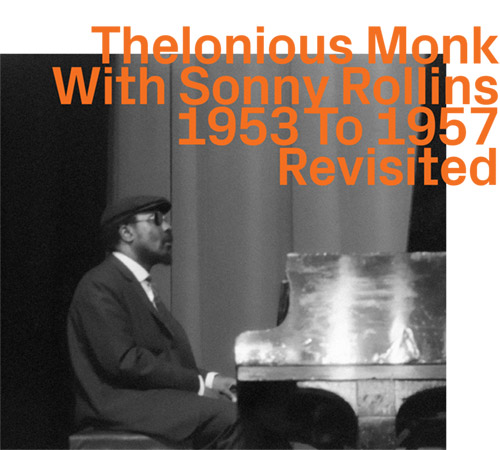
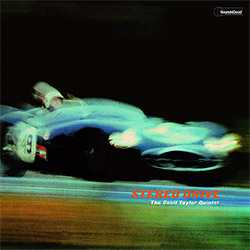
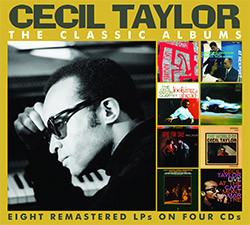
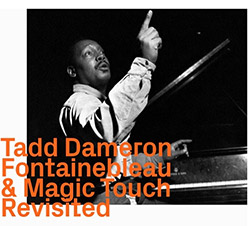
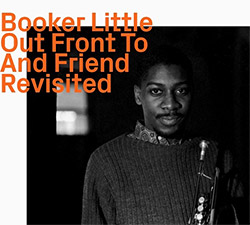
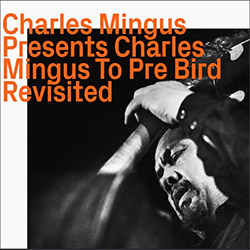
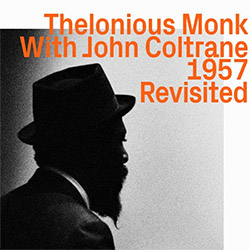
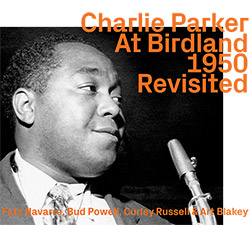
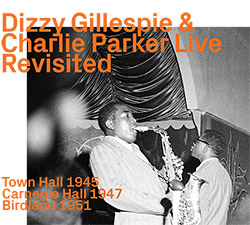
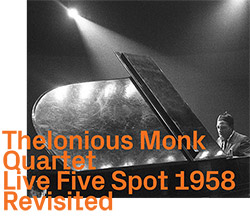
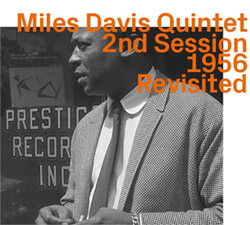
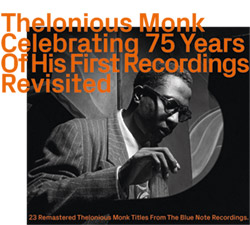
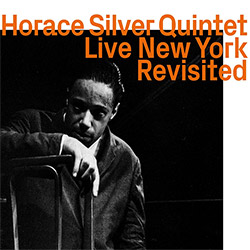
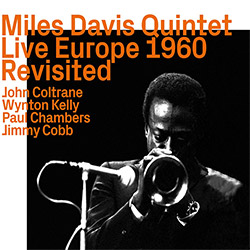
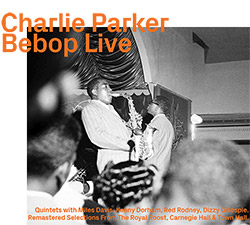
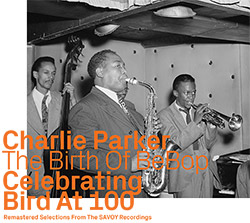
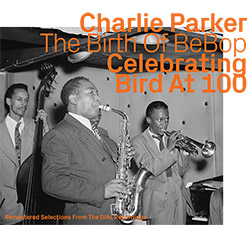
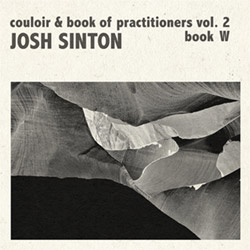
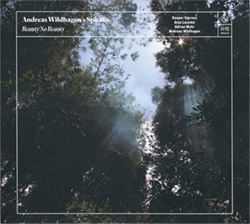
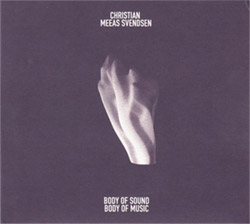
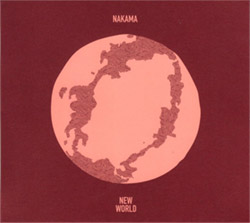
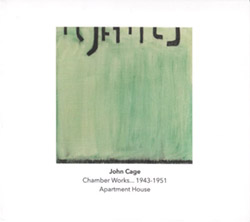
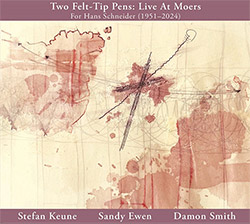
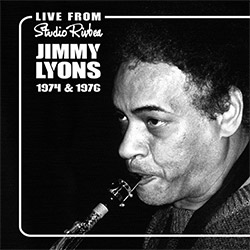
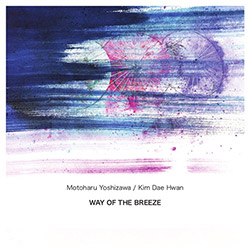
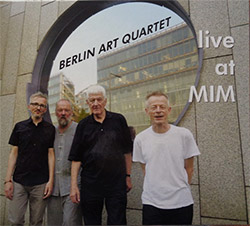
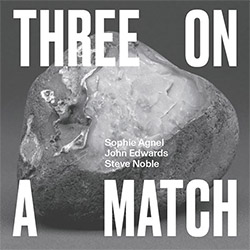

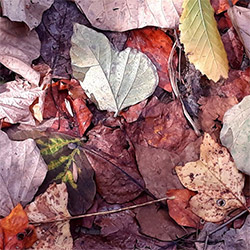
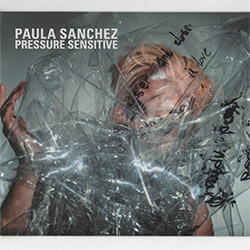
![Eternities: Rides Again [CASSETTE]](https://www.teuthida.com/productImages/misc4/36247.jpg)

![Lopez, Francisco: Untitled (2021-2022) [2 CDs]](https://www.teuthida.com/productImages/misc4/36438.jpg)
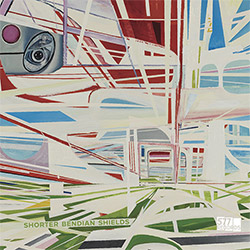
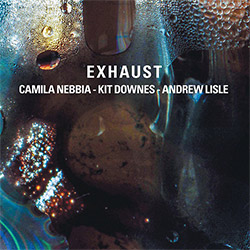
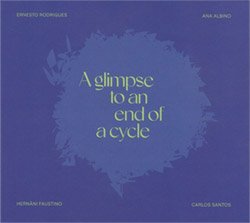
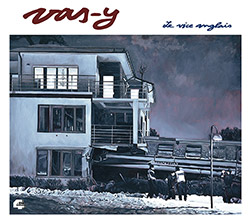
![Eventless Plot | Haarvol: The Subliminal Paths [CASSETTE + DOWNLOAD]](https://www.teuthida.com/productImages/misc4/36232.jpg)
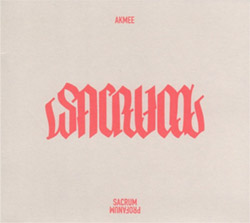

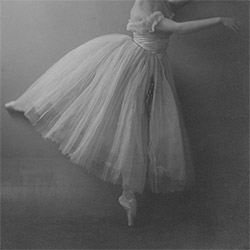

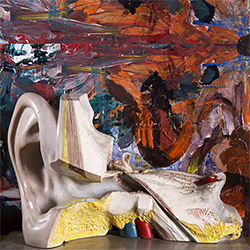
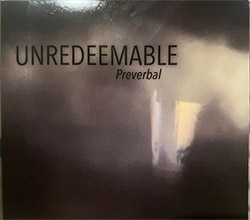

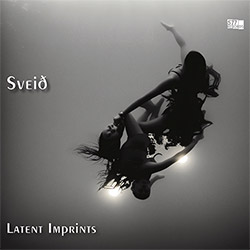
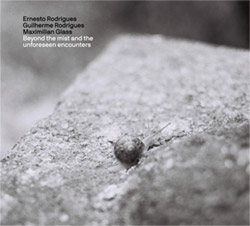
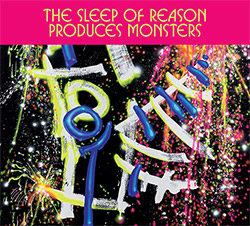
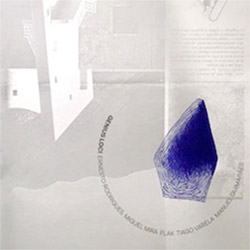
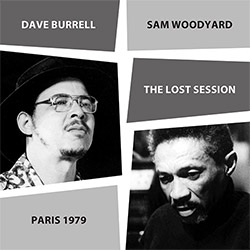
![Eventless Plot | Francesco Covarino: Methexis [CASSETTE + DOWNLOAD]](https://www.teuthida.com/productImages/misc4/36231.jpg)
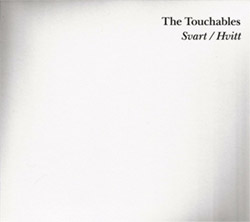
![Brown, Dan / Dan Reynolds: Live At The Grange Hall [unauthorized][CASSETTE]](https://www.teuthida.com/productImages/misc4/36245.jpg)
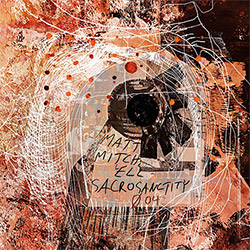
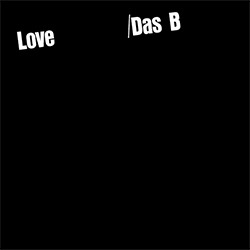
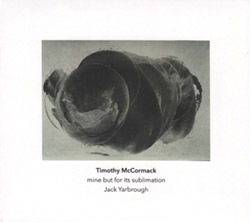
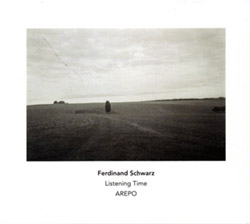
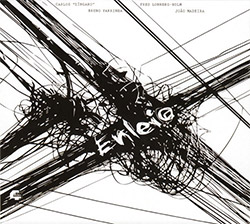
![Das B (Mazen Kerbaj / Mike Majkowski / Magda Mayas / Tony Buck): Love [VINYL]](https://www.teuthida.com/productImages/misc4/36329.jpg)
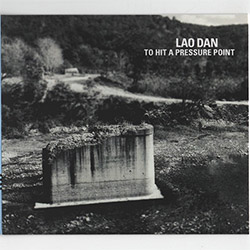
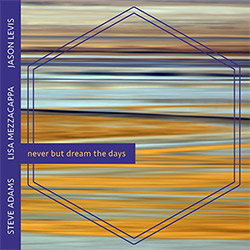
![Hemphill Stringtet, The: Plays the Music of Julius Hemphill [VINYL]](https://www.teuthida.com/productImages/misc4/36409.jpg)
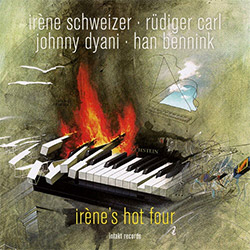
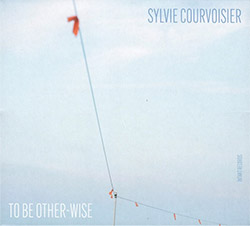
![Halvorson, Mary Septet: Illusionary Sea [2 LPS]](https://www.teuthida.com/productImages/misc4/17952.jpg)
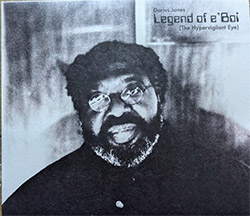
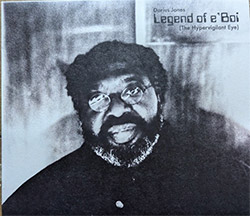
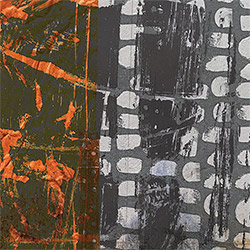
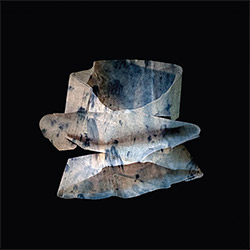
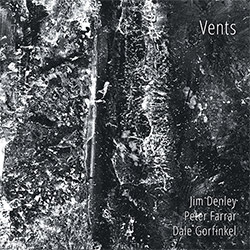
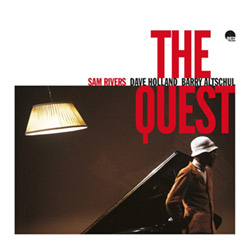
![Re-Ghoster Extended: The Zebra Paradox [VINYL]](https://www.teuthida.com/productImages/misc4/36204.jpg)
![FDF Trio: Possibility And Prejudices From Within A Cup [VINYL]](https://www.teuthida.com/productImages/misc4/36205.jpg)
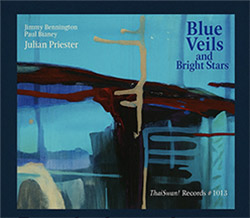
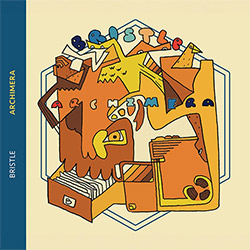
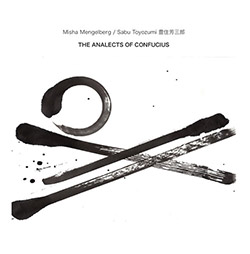
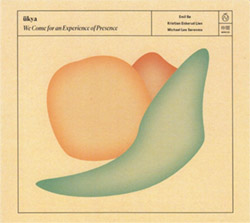
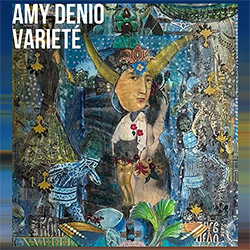

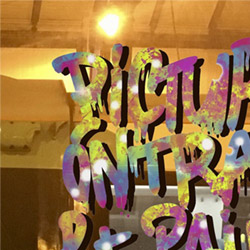
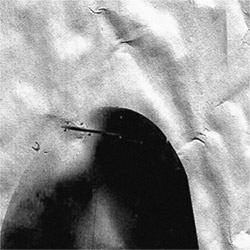
![Money : Money 2 [2 CDs]](https://www.teuthida.com/productImages/misc4/35894.jpg)
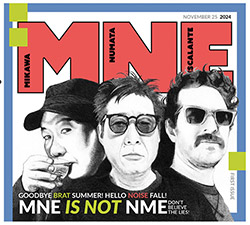
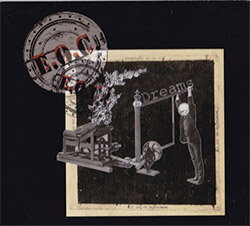
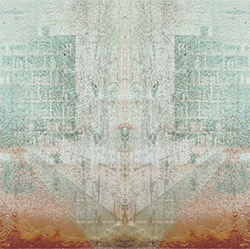
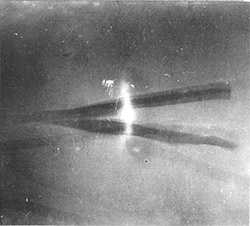
![Klinga, Erik: Elusive Shimmer [VINYL]](https://www.teuthida.com/productImages/misc4/36258.jpg)
![CHANGES TO blind (Phil Zampino): Volume 9 - I Wave on a Fine Vile Mist [CD + DOWNLOAD]](https://www.teuthida.com/productImages/misc4/36061.jpg)

![Wallmart / Rubbish: Asset Protection [split CD]](https://www.teuthida.com/productImages/misc4/35900.jpg)
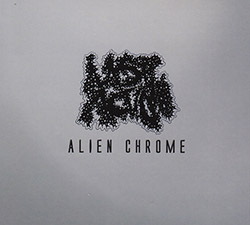
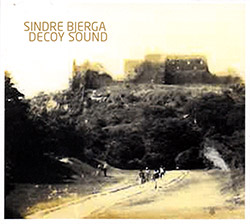
![+Dog+: The Family Music Book Vol. 5 [2 CDs]](https://www.teuthida.com/productImages/misc4/35897.jpg)
![Kuvveti, Deli : Kuslar Soyledi [CASSETTE w/ DOWNLOAD]](https://www.teuthida.com/productImages/misc4/36107.jpg)

![Nakayama, Tetsuya: Edo Wan [CASSETTE w/ DOWNLOAD]](https://www.teuthida.com/productImages/misc4/36105.jpg)
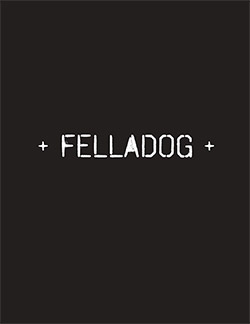
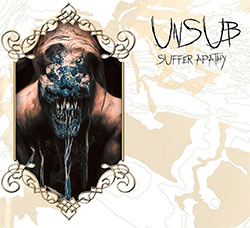
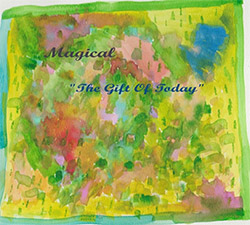
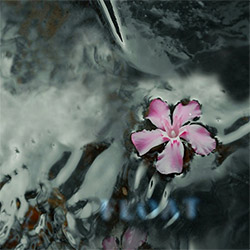
![Yiyuan, Liang / Li Daiguo: Sonic Talismans [VINYL]](https://www.teuthida.com/productImages/misc4/35957.jpg)
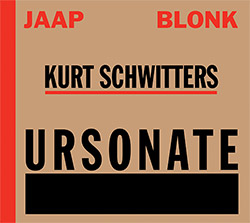
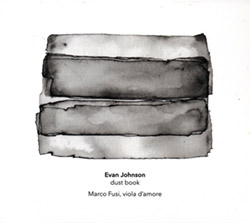
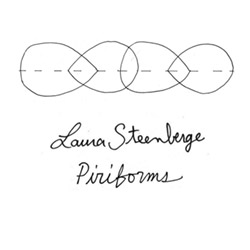

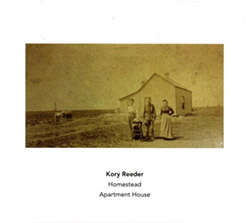
![Palestine, Charlemagne / Seppe Gebruers: Beyondddddd The Notessssss [VINYL]](https://www.teuthida.com/productImages/misc4/36206.jpg)
![Palestine, Charlemagne / Seppe Gebruers: Beyondddddd The Notessssss [NEON GREEN VINYL]](https://www.teuthida.com/productImages/misc4/36207.jpg)
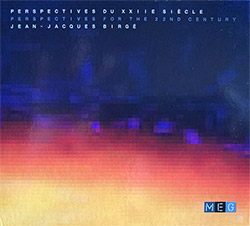
![Laubrock, Ingrid: Purposing The Air [2 CDs]](https://www.teuthida.com/productImages/misc4/35639.jpg)
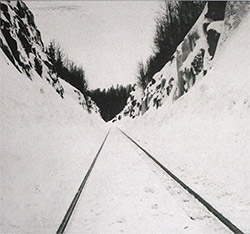
![Yoko, Ono / The Great Learning Orchestra: Selected Recordings From Grapefruit [2 CDs]](https://www.teuthida.com/productImages/misc4/35841.jpg)
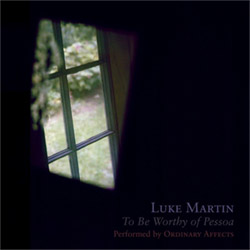
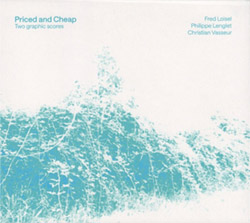
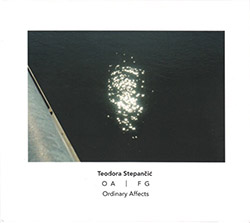
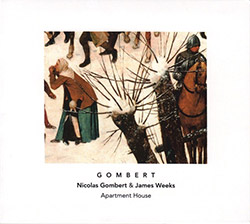
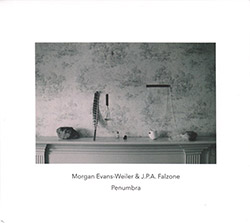
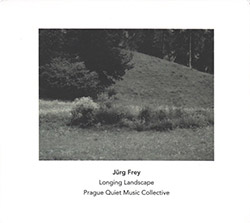
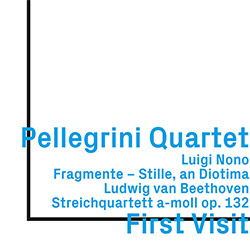
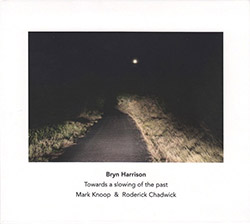
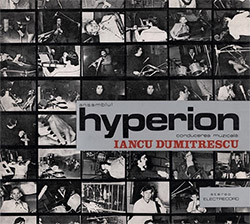
![Zorn, John / JACK Quartet: The Complete String Quartets [2 CDs]](https://www.teuthida.com/productImages/misc4/35609.jpg)

![Lonsdale, Eden: Dawnings [2 CDs]](https://www.teuthida.com/productImages/misc4/35480.jpg)
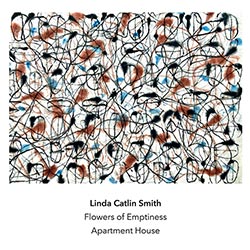
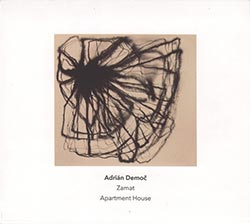
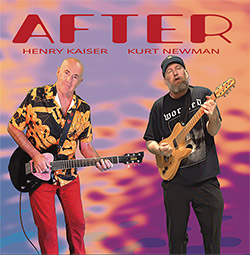
![Sorry For Laughing (G. Whitlow / M. Bates / Dave-Id / E. Ka-Spel): Rain Flowers [2 CDS]](https://www.teuthida.com/productImages/misc4/35985.jpg)
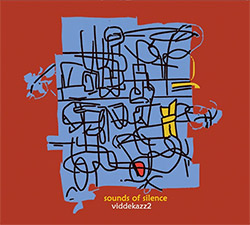
![Rolando, Tommaso / Andy Moor : Biscotti [CASSETTE w/ DOWNLOADS]](https://www.teuthida.com/productImages/misc4/36106.jpg)
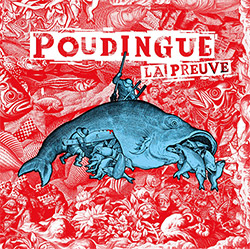
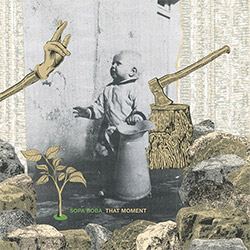
![Electric Bird Noise / Derek Roddy: 8-10-22 [CD EP]](https://www.teuthida.com/productImages/misc4/35970.jpg)
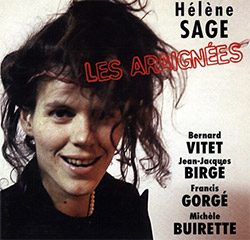

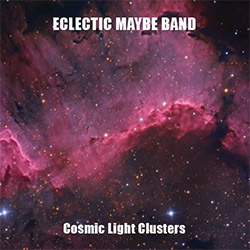
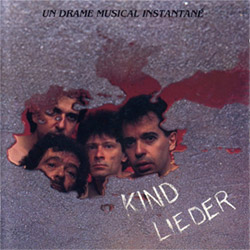
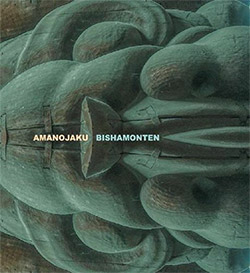
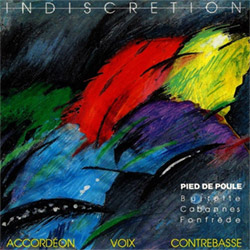
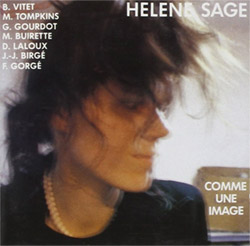
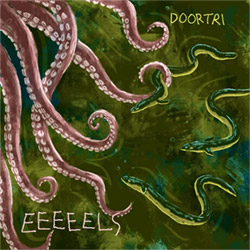
![Elephant9 : Mythical River [VINYL]](https://www.teuthida.com/productImages/misc4/34624.jpg)
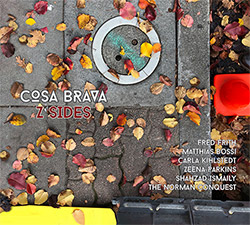
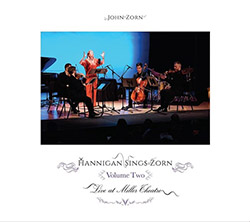
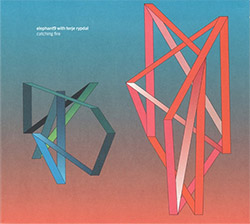
![Elephant9 with Terje Rypdal: Catching Fire [VINYL 2 LPs]](https://www.teuthida.com/productImages/misc4/35355.jpg)
![Deerlady (Obomsawin, Mali / Magdalena Abrego): Greatest Hits [VINYL]](https://www.teuthida.com/productImages/misc4/34876.jpg)
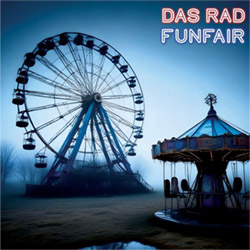
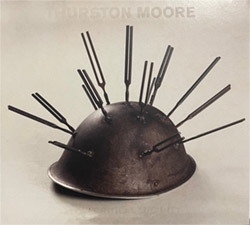
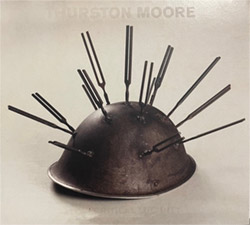
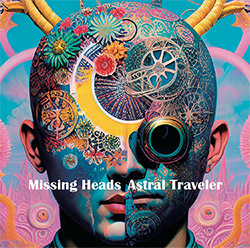
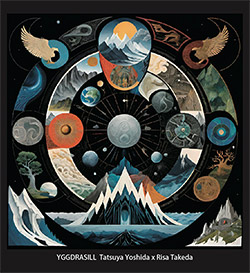
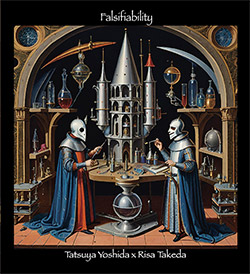
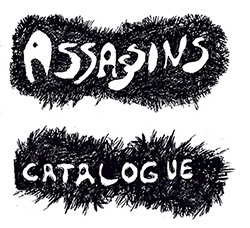
![Surplus 1980: Illusion of Consistency [CD]](https://www.teuthida.com/productImages/misc4/35069.jpg)
![Staiano, Moe: Away Towards the Light [VINYL + DOWNLOAD]](https://www.teuthida.com/productImages/misc4/35037.jpg)
![Coley, Byron: Dating Tips for Touring Bands [VINYL]](https://www.teuthida.com/productImages/misc4/17906.jpg)

![Lost Kisses: My Life is Sad & Funny [DVD]](https://www.teuthida.com/productImages/misc4/lostKissesDVD.jpg)